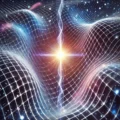Reformulating the Schwarzschild Radius in Terms of Energy
Abstract
The Schwarzschild radius is traditionally defined in terms of mass as a solution to Einstein’s field equations.
In this work, we recast the Schwarzschild radius as a function of energy, highlighting the physical implications
for field-based models of gravity. This reinterpretation supports a broader framework where gravitational
curvature arises from structured energy flow and vacuum impedance, rather than from rest mass alone.
Introduction
The Schwarzschild solution to Einstein’s field equations yields a critical radius for a spherically symmetric,
non-rotating mass:
![]()
This defines the event horizon beyond which events cannot escape a gravitational field.
In continuum acceleration (CA) theory, gravity arises from energy flow variations in space, not mass-based curvature.
Rewriting the Schwarzschild radius in terms of energy reflects this view.
Energy Reformulation
Using Einstein’s equivalence:
![]()
the Schwarzschild radius becomes:
![]()
This generalizes the concept to any form of energy—not just rest mass—making it compatible with systems involving
pure radiation or field energy.
Physical Interpretation
The reformulated equation shows the Schwarzschild radius depends linearly on energy and is inversely proportional to the
fourth power of the speed of light. In CA theory, where
![Rendered by QuickLaTeX.com \[ \( c = \frac{1}{\sqrt{\mu_0 \varepsilon_0}} \) \]](https://gravityz0.com/wp-content/ql-cache/quicklatex.com-dd72e670d9e1eafc72e81acb7073466a_l3.png)
can vary with vacuum impedance, this becomes dynamically significant.
Gravitational Framework Shift
Gravitational acceleration in CA is driven by changes in local energy propagation speed:
![]()
Where Gv is the gravitational vector, and spatial variations in (c) arise from energy-induced variations in u0 and e0. Thus, (rs) becomes an energy-density-defined boundary in space.
Conclusion
The energy-based Schwarzschild radius:
![]()
supports reinterpretation of gravity in terms of energy flow and vacuum field structure. This perspective complements field-driven models of the universe and extends general relativity toward energy-centric formulations.
